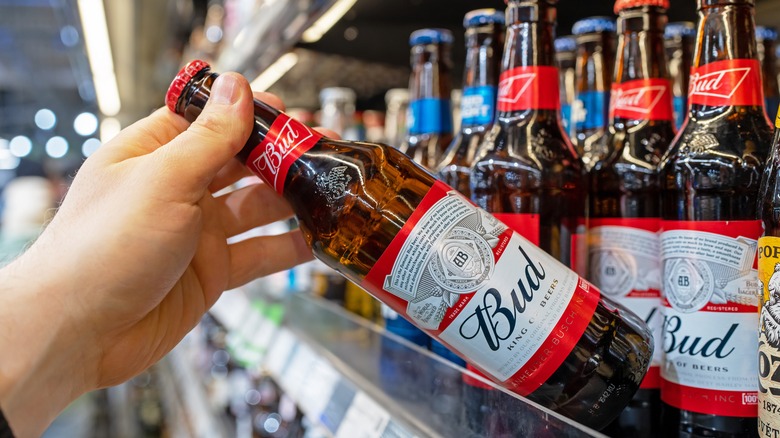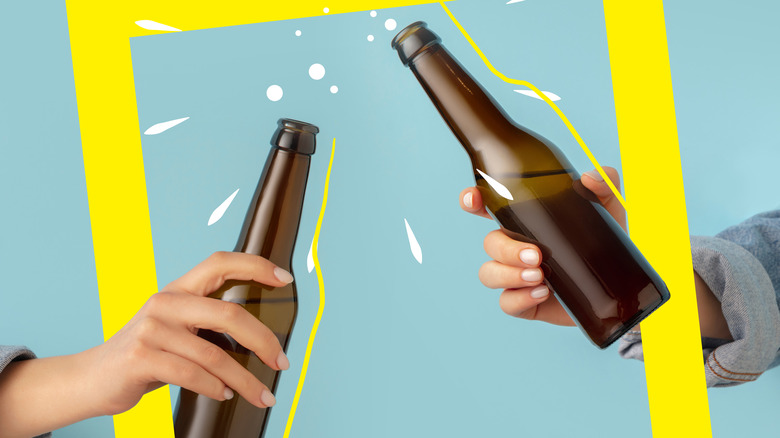Why Are American Beers Served In Smaller Portions?
If there is one European country that can compete with America in terms of love and consumption of beer, it's Germany. You're more likely to be served beer than water in most German restaurants and it's not a small beer, either. Though we may look through Oktoberfest with a more stereotypical lens than it deserves, those large steins are in fact the average size of a German beer. Called a "masskrug" these iconic steins hold an astonishing one liter of beer (32 ounces). In contrast to the standard U.S. pint (16 ounces), a masskrug is over double the size.
These size differences also apply to German beer cans and bottles. A German bottle runs between 11.2 to 16.9 ounces. Meanwhile, over in the U.K., the size is around 15 ounces. Keen-eyed observers will note that American beer bottles, cans, and glass sizes are, in fact, smaller than their European counterparts. What gives? How come we get the short end of the stick, especially considering how much Americans love beer?
The U.S. has had its ups and downs when it comes to alcohol consumption. As far as bottle/can size is concerned, the story ranges from changing industrial shipping standards to the temperance movement that spawned one of the biggest government bungles in history to latter-century regulations. Each had a role to play in the current size of American beer servings.
Exports, Prohibition, and regulation
Before the government decided it would be a good idea to prohibit everything alcohol related in the early 20th century, the practice of smaller beer bottle sizes was becoming well entrenched in the industry. Anheuser-Busch had been in the practice of bottling beer since the 19th century. Originally, 26-ounce bottles, intended for sparkling water, were used to package the beer. This was the standard size for export bottles until 1910 when 12-ounce longneck beer bottles became the preferred size for exporting.
After Prohibition left its mark on the American landscape, during which the beer industry found new and creative ways to stay afloat, 12-ounce bottles and cans were universally adopted across the industry as the standard drink size. Despite the U.S. government briefly changing the standard size to 16 ounces (which is, you'll recall, a pint) during the 1970s, and then reverting back to 12 ounces in the 1980s, these regulations had no real effect on changing the size of beer receptacles.
To this day, 12 ounces is the standard for everything from mass-produced beer to independent brewhouses. The latter, however, has been experimenting with 16-ounce cans for some special brews, but, on the whole, the industry is sticking with 12. So, you keen-eyed observer, fret not. You're not being cheated. You're just participating in the results of history.

